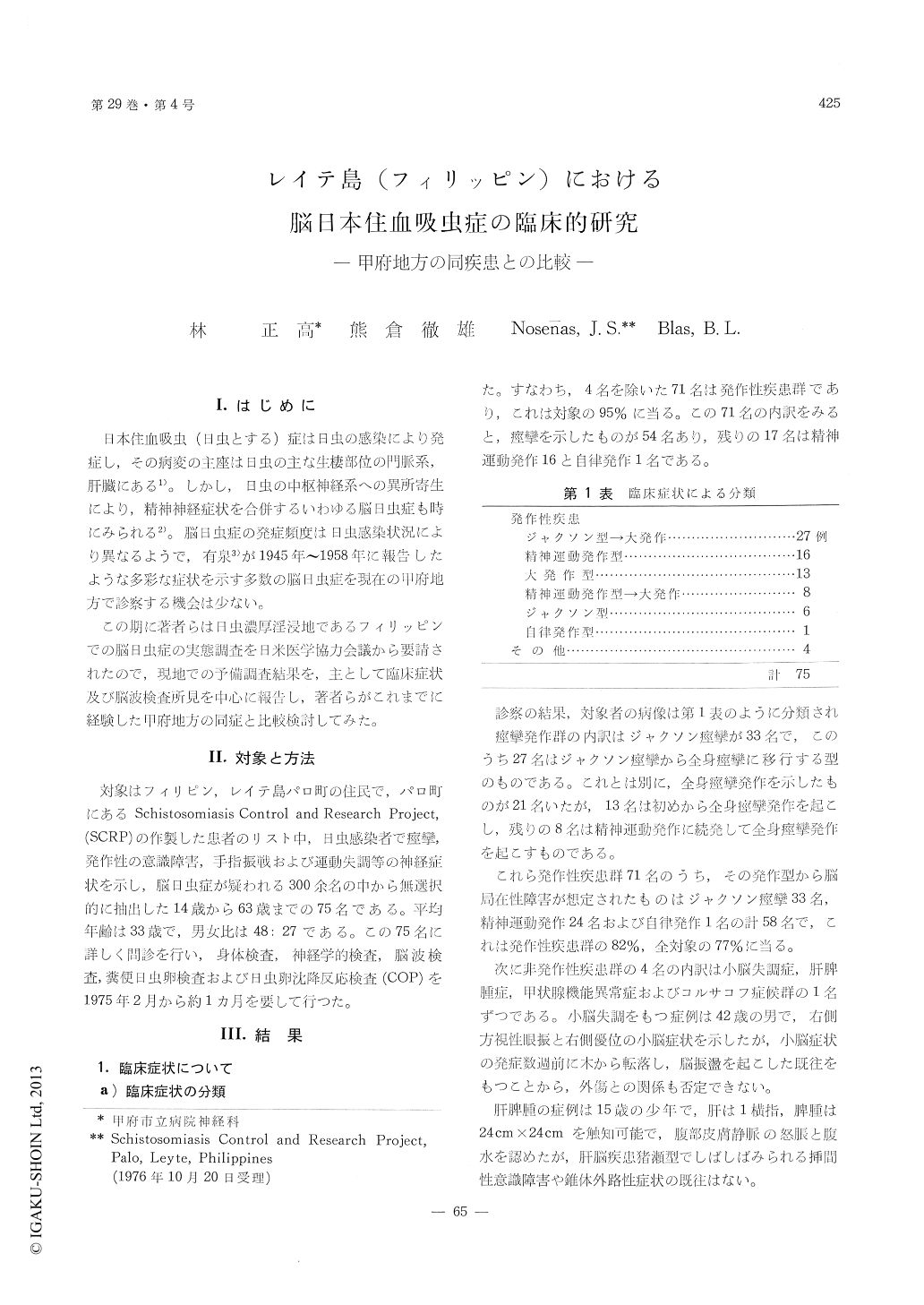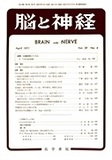Japanese
English
- 有料閲覧
- Abstract 文献概要
- 1ページ目 Look Inside
I.はじめに
日本住血吸虫(日虫とする)症は日虫の感染により発症し,その病変の主座は日虫の主な生棲部位の門脈系,肝臓にある1)。しかし,日虫の中枢神経系への異所寄生により,精神神経症状を合併するいわゆる脳日虫症も時にみられる2)。脳日虫症の発症頻度は日虫感染状況により異なるようで,有泉3)が1945年〜1958年に報告したような多彩な症状を示す多数の脳日虫症を現在の甲府地方で診察する機会は少ない。
この期に著者らは日虫濃厚淫浸地であるフィリッピンでの脳日虫症の実態調査を日米医学協力会議から要請されたので,現地での予備調査結果を,主として臨床症状及び脳波検査所見を中心に報告し,著者らがこれまでに経験した甲府地方の同症と比較検討してみた。
Schistosomiasis Japonica (SJ) is caused by infection with Schistosoma Japonicum, and its lesion are located mainly in the portal system and liver which are parasitized by this worm. However, the so-called cerebral Schistosomiasis Japonica (CSJ) is sometimes seen which is complicated by neuro-psychiatric symptoms due to an ectopic parasitism of the worm in the cerebral nervous system.
We examined the CSJ in Philippines which are one of the areas heavily infected with Schistosoma Japonicum. The present paper deals with the results of a preliminary survey with special refer-ence to clinical symptoms and electroencephalo-graphic (EEG) findings in comparison with the same disease in the Kofu City area which we have experienced so far.
Subjects and Methods: From the list of patients living in Palo Town, Leyte, Philippines which was prepared by the Schistosomiasis Control and Research Project (SCRP) of Palo Town, we selected 75 patients randomly from 300 and some patients with suspected CSJ who showed neurological symptoms such as convulsion, paroxysmal distur-bance of consciousness, finger tremor, and ataxia. The ages of the subjects anged from 14 to 63 years, with a mean of 33. The ratio of males to females was 48:27. On these 75 subjects, we performed detailed interview physical examination, neurological examination, and EEG, taking about on month from February, 1975.
Results are as follows:
1) Of the 75 subjects, 71 (91%) had paroxysmal disease, consisting of Jacksonian type in 33, psycho-motor seizure in 24, grand mal in 13, and autonomic seizure in 1. The remaining 4 had cerebellar ataxia, hepatosplenomegaly, dysthyroidism, or Korsakoff's syndrome.
2) Of the 71 with paroxysmal disease, 49 showed late onset seizure (onset after the age of 20), and 51 had frequent seizures (more than once monthly).
3) EEG was judged to be normal in 24 (32%), borderline in 13 (17%), and normal in 38 (51%). The abnormal and bordeline EEGs were character-lized by asymmetrical findings in the bursts of slow waves and basic rhythms. There was no case with seizure discharge other than paroxysmal slow wave.
4) Discussion was made in reference to the strong suspicion that cerebral symptoms of the subjects, paroxysmal disease in particular, were a syndrome associated with Schistosoma Japonicum, and to the difference between CSJ in Japan and that in the Philippines.

Copyright © 1977, Igaku-Shoin Ltd. All rights reserved.


